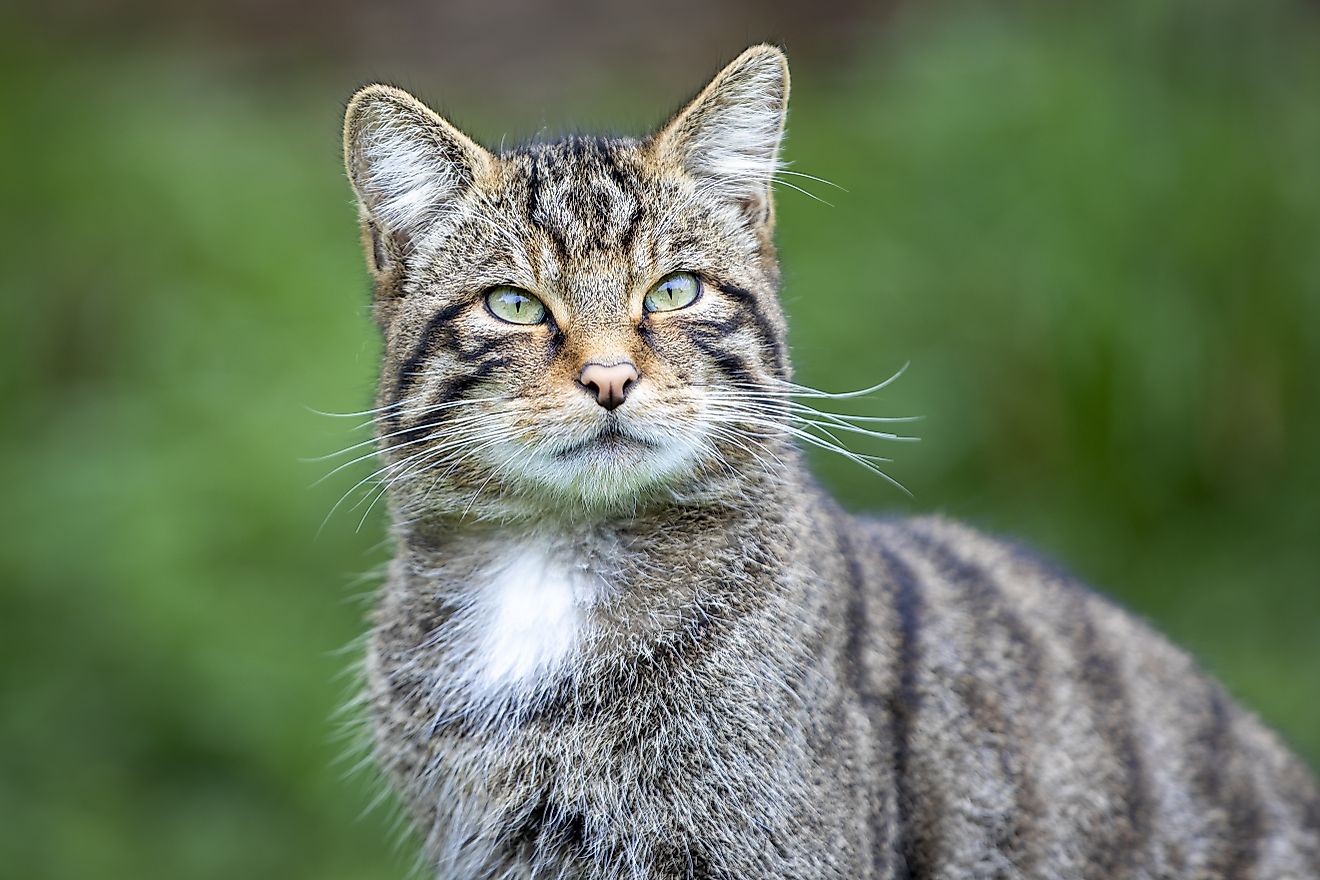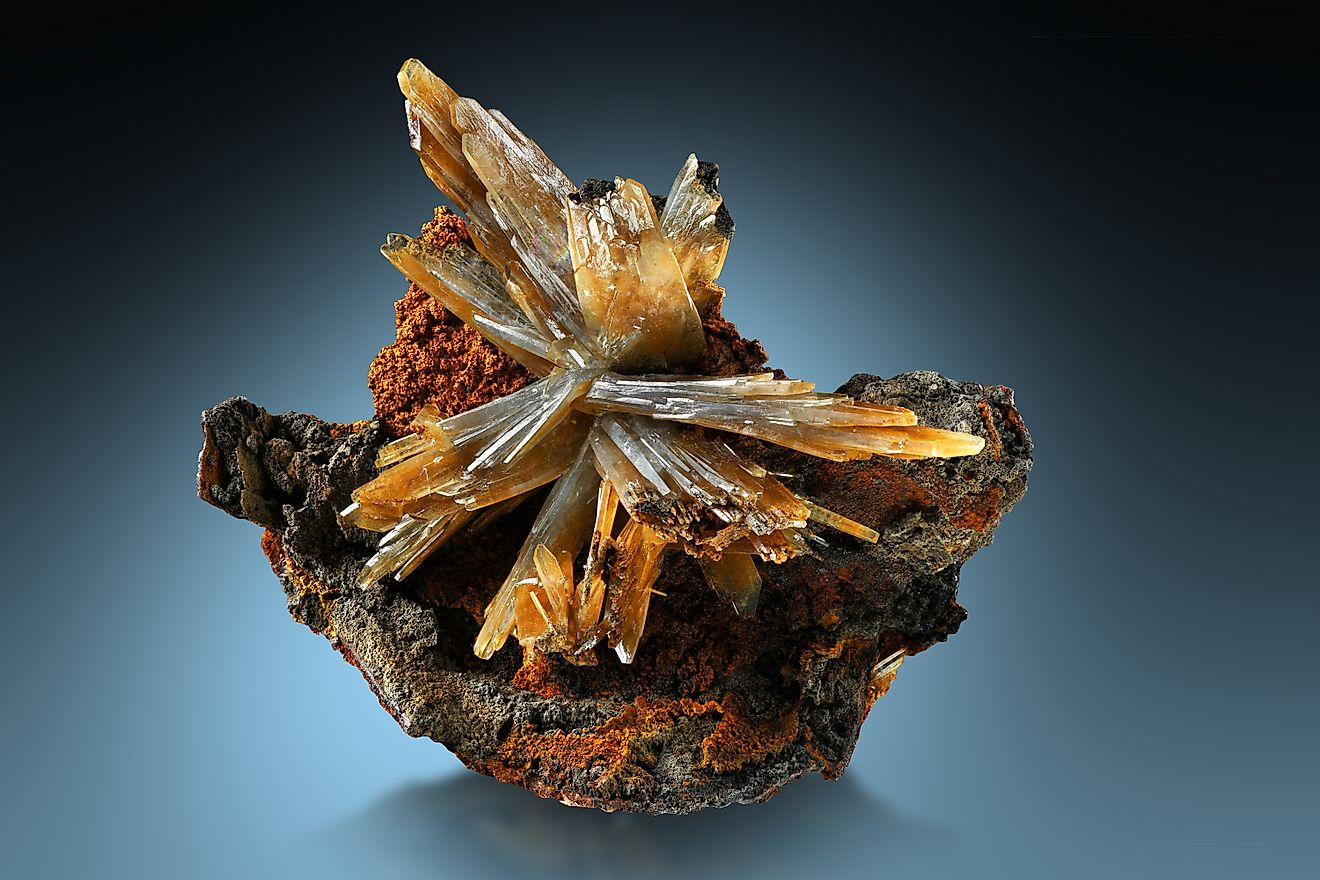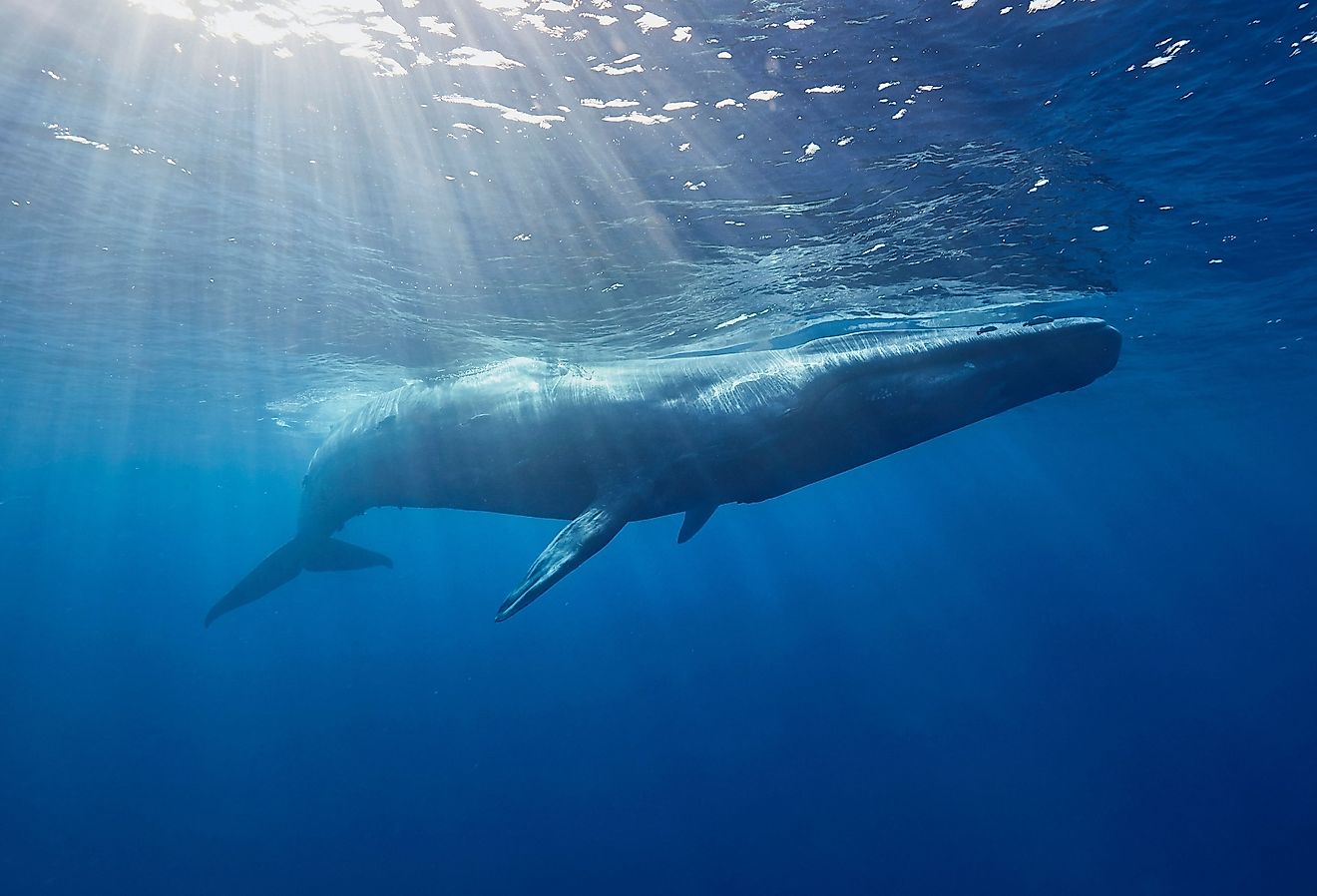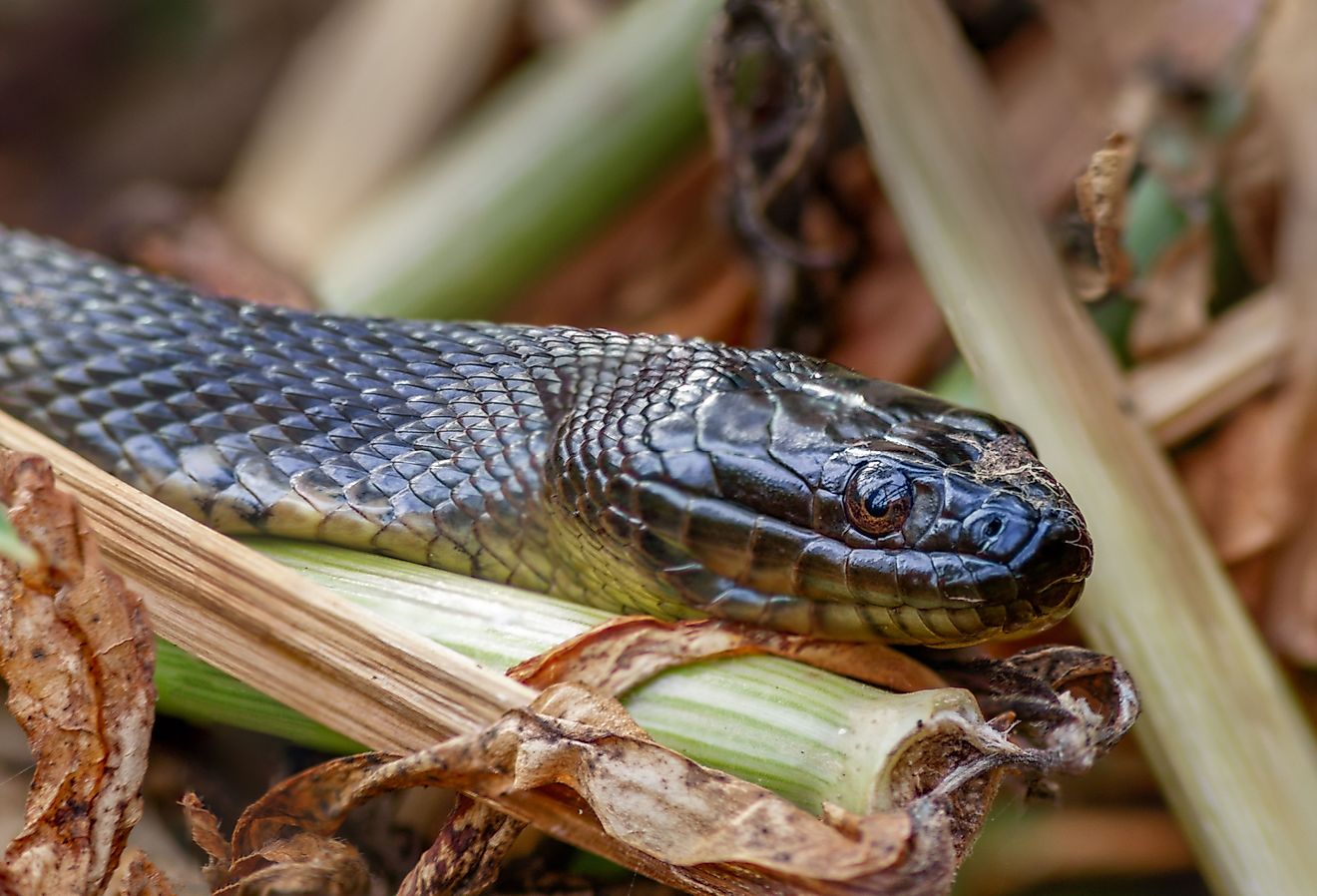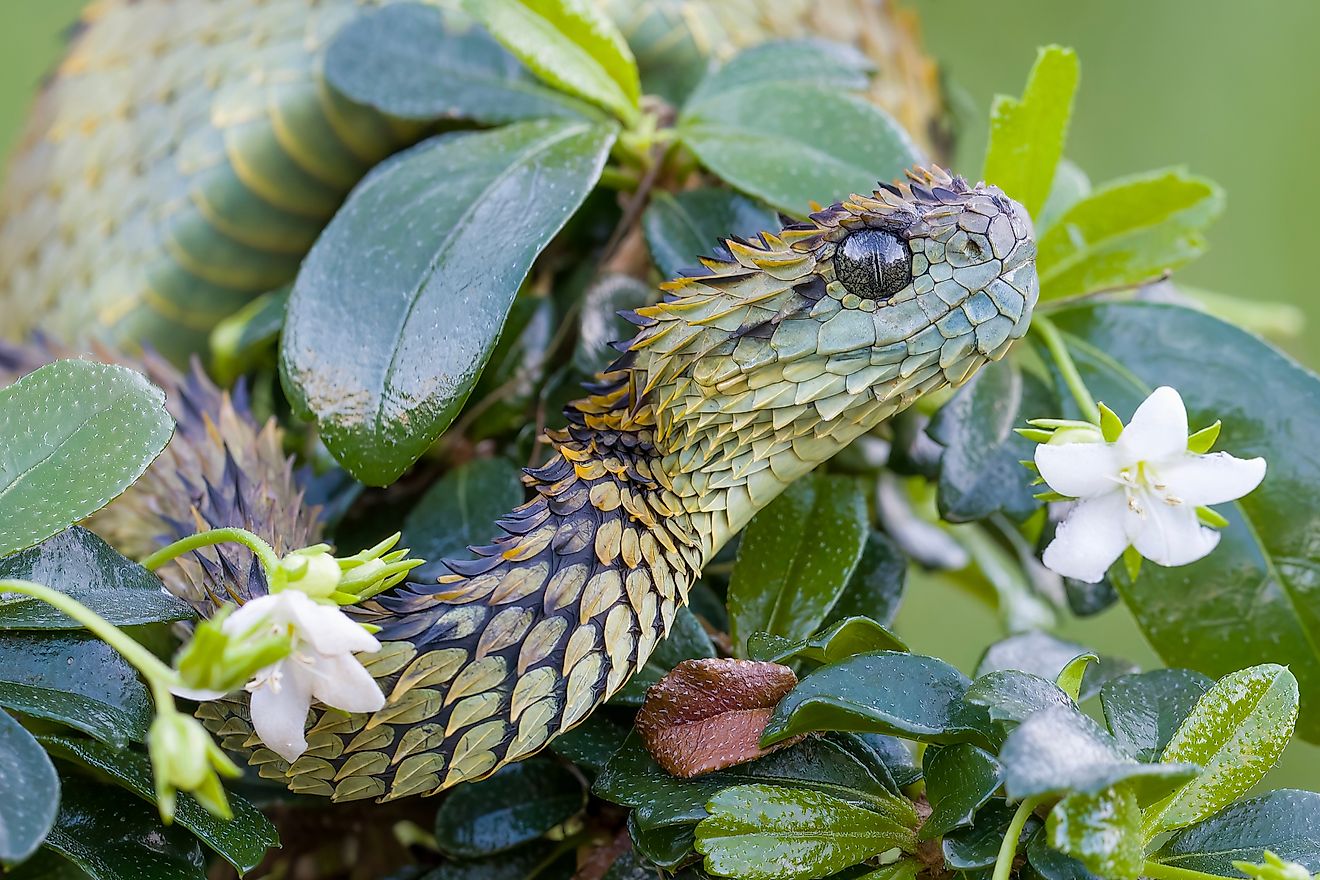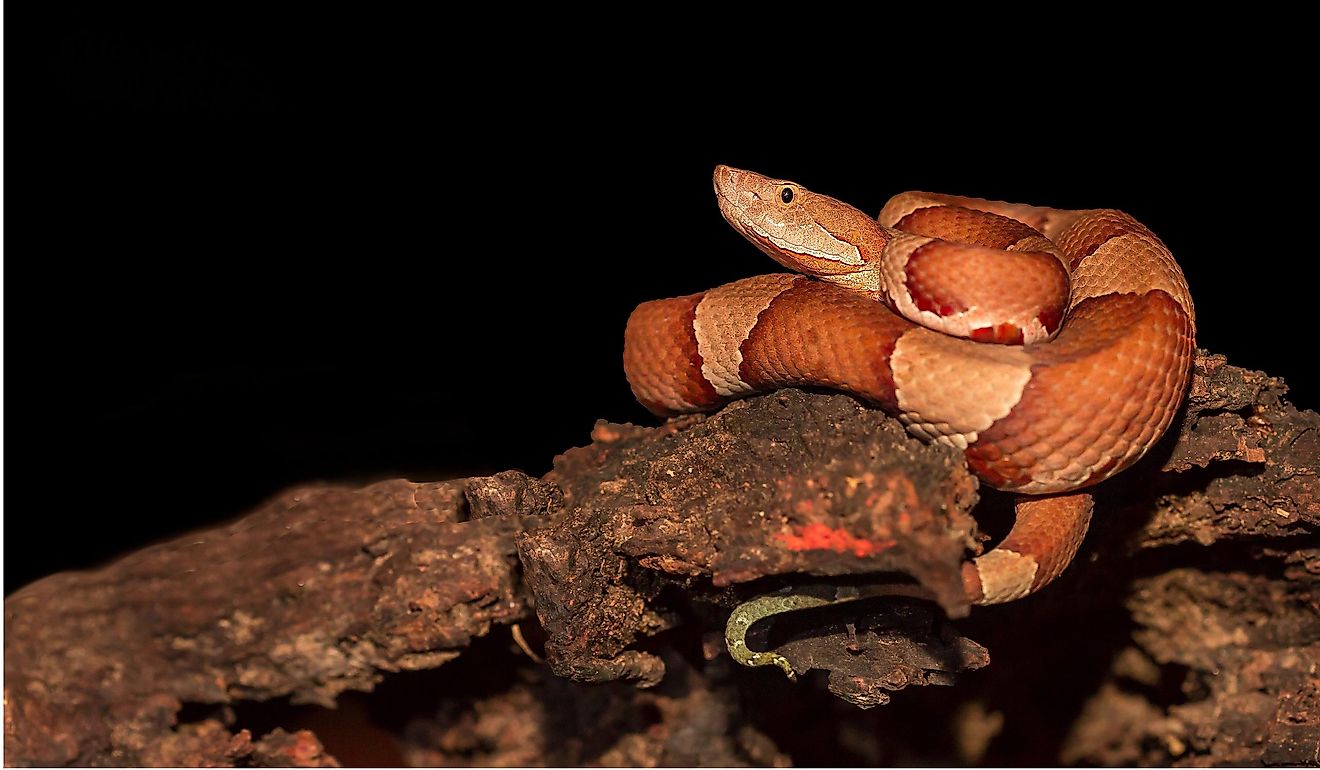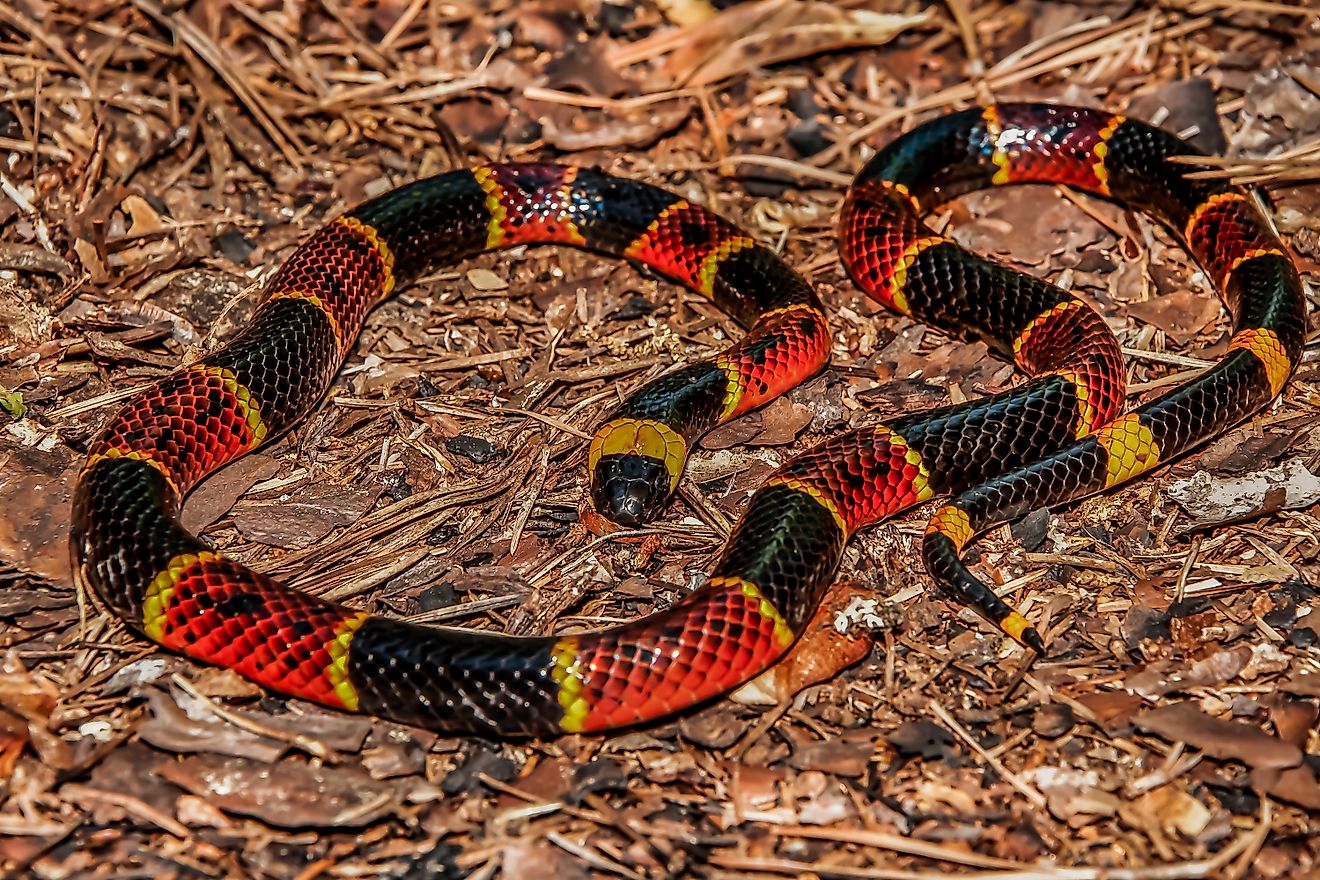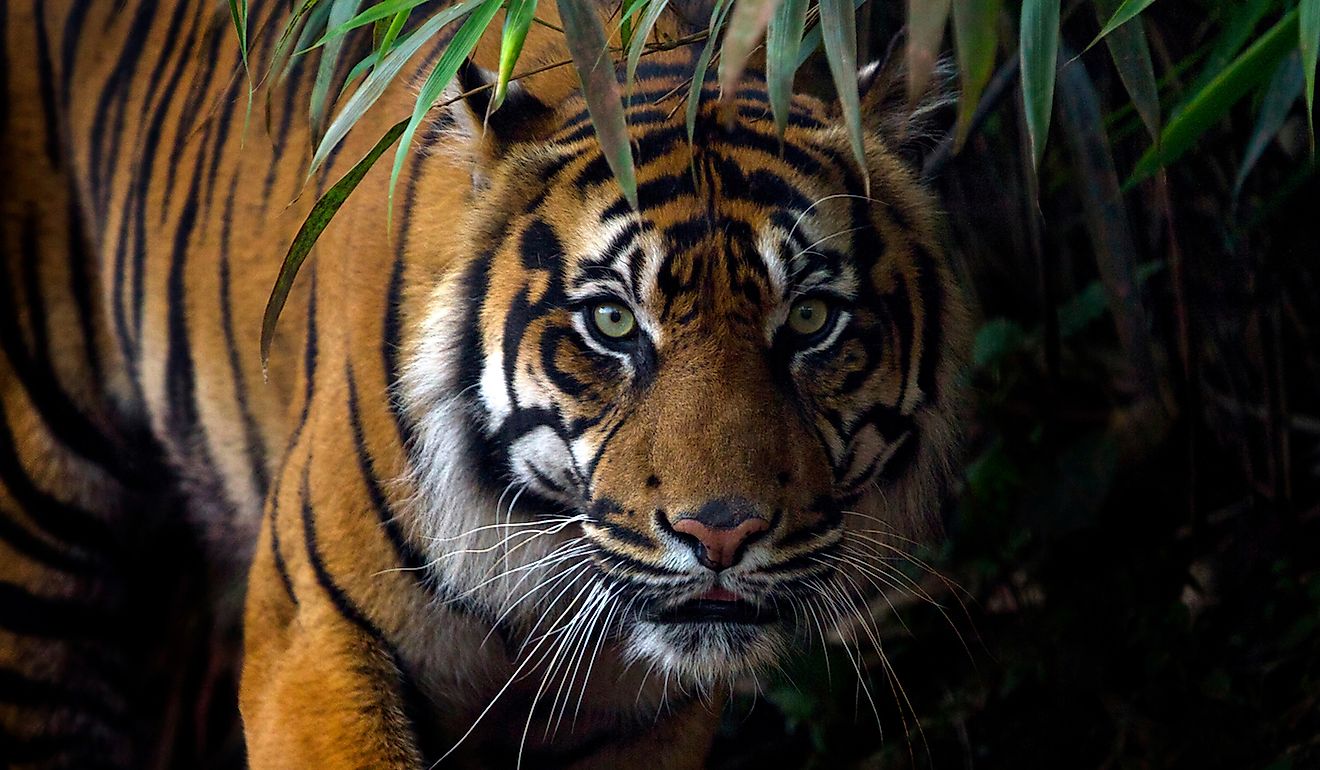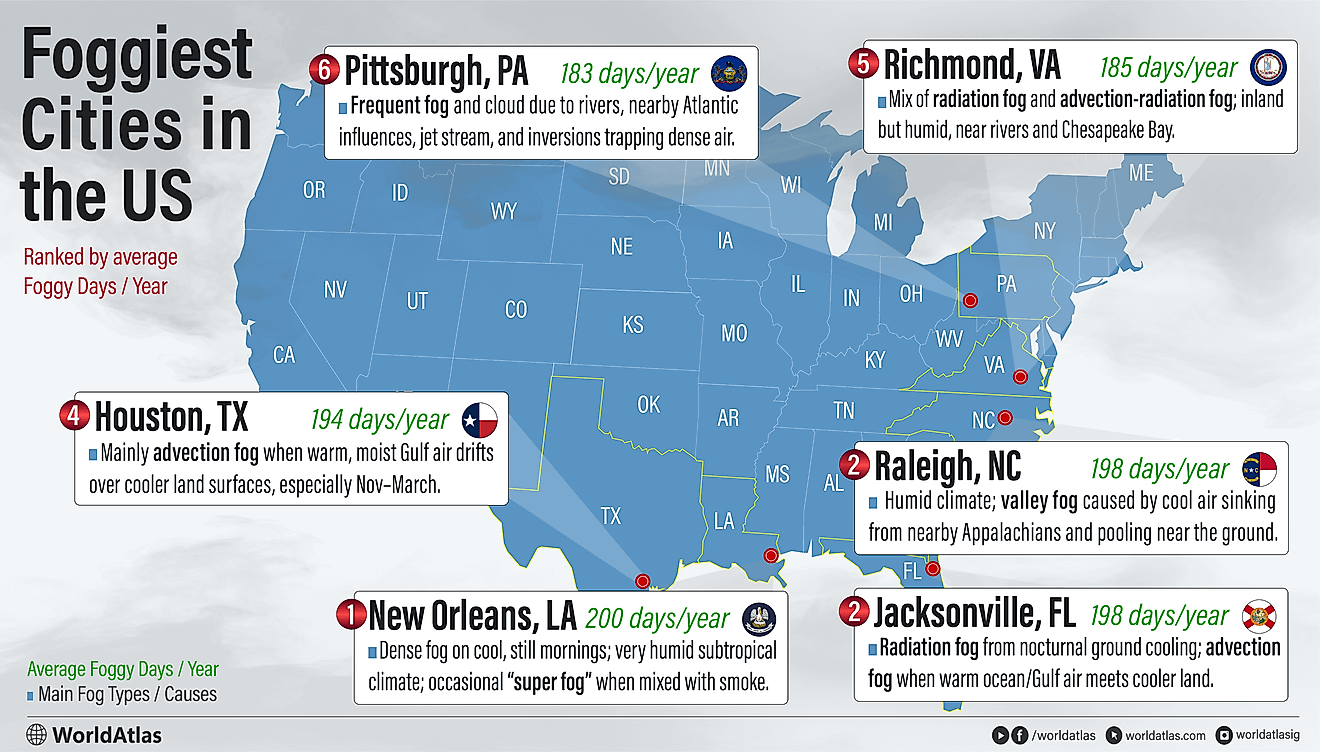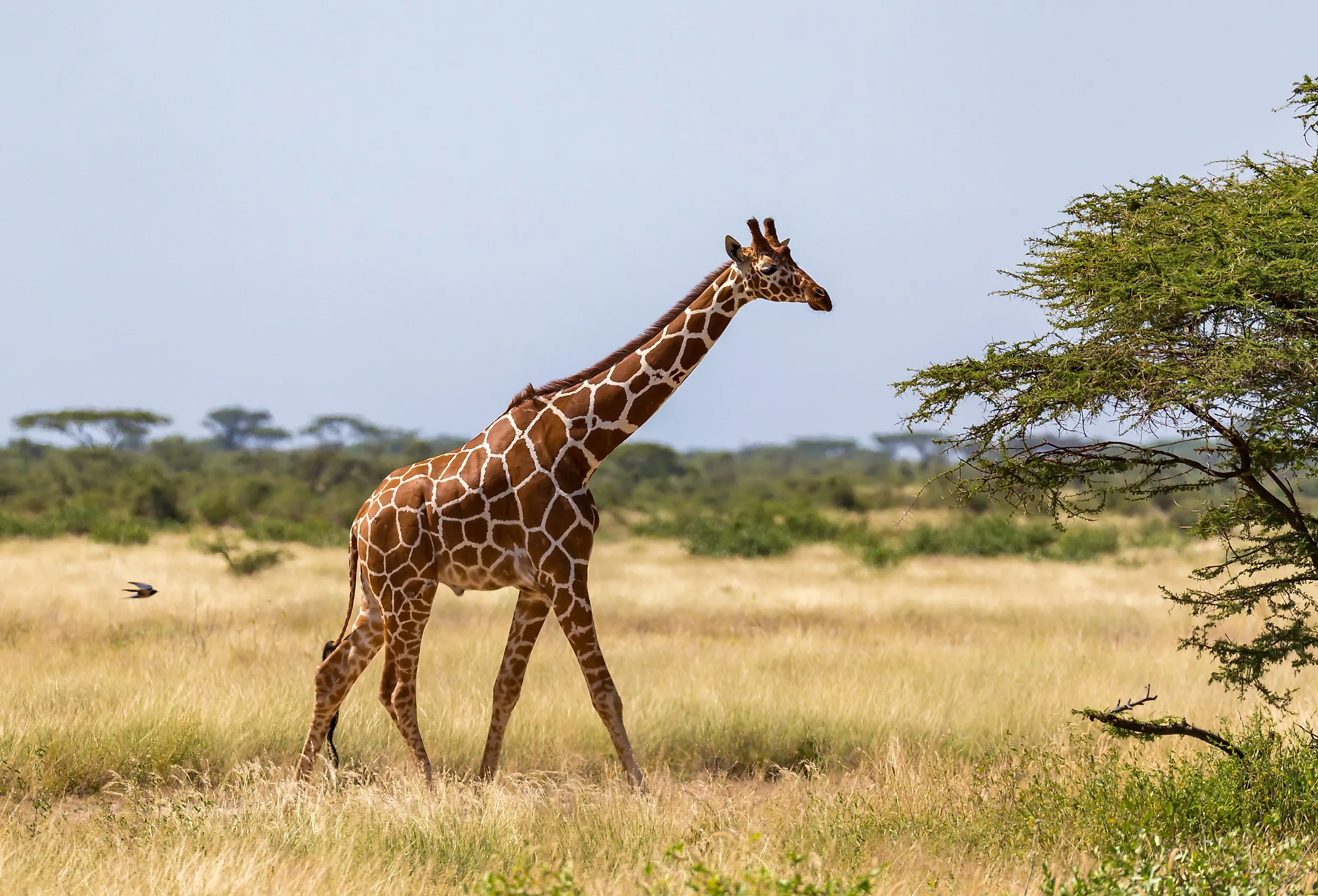
Giraffe
Towering over the animal kingdom with its immense height, the giraffe is the tallest land mammal on Earth. Reaching heights of up to 19 feet (5.7 m), these massive animals boast a unique appearance and advantageous skills. Often found in dry areas, giraffes are the embodiment of evolution, as their long necks give them height that is perfect for reaching food in trees, branches, and other difficult spots. Sharing their homes with lions, leopards, and other predators, giraffes are stunning land mammals with many interesting characteristics.
Range And Habitat

Over the past century, the giraffe population has dropped immensely across the globe; the animal which was once spread across many countries is now confined to certain regions. As for the current population, giraffes live in scattered groups throughout regions of Sub-Saharan Africa. Specifically, countries such as Namibia and South Africa boast the largest giraffe populations.
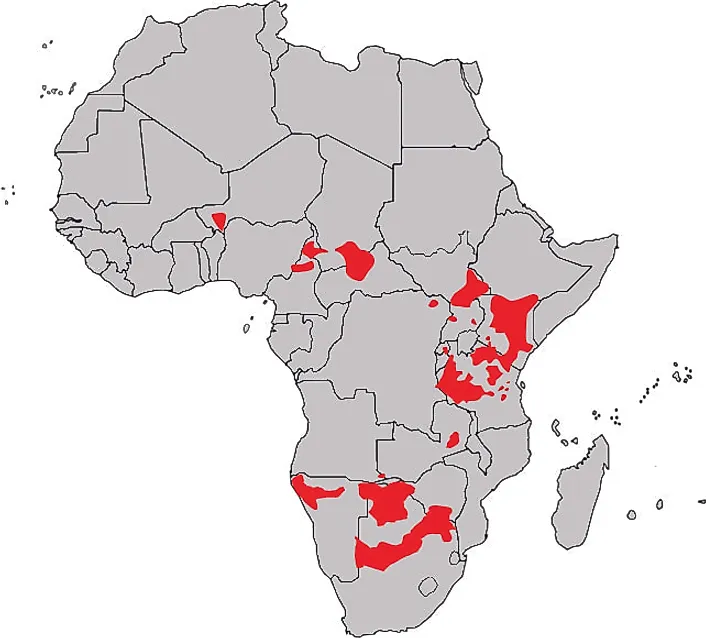
These regions are ideal as the massive mammals prefer to live in the semi-arid savannah and savannah woodlands. Both biomes are home to many tree species which are optimal sources of food for the species. That being said, while most of the giraffe population lives in these regions, there are certain species like the Angolan giraffe which thrive in desert environments.
Physical Description and Details
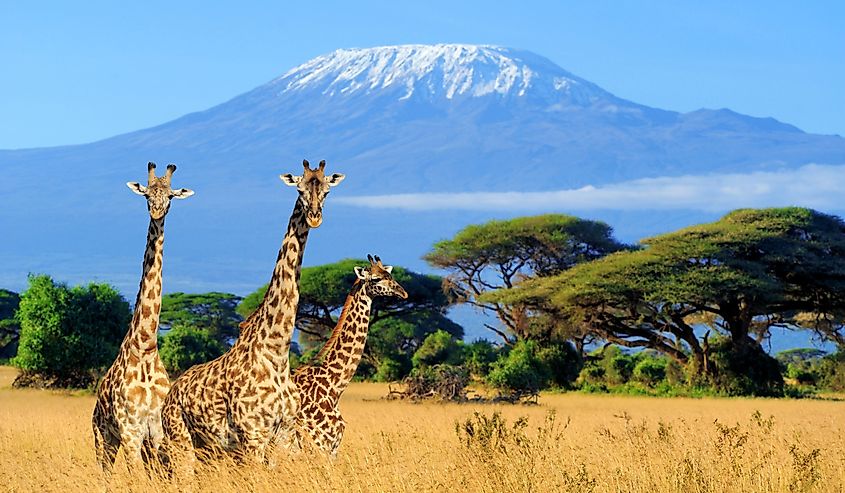
Classified as a large African hoofed mammal, the giraffe is the tallest living terrestrial animal on Earth. Belonging to the Giraffidae family and Giraffa genus, this massive mammal can reach a height of up to 19 feet (5.7 m). This is due to the elongated neck and legs of the animal which can both reach up to 7 feet (2.1 m) in length! Apart from this, a giraffe’s body is comparatively smaller than the animal giving it a unique and trim appearance. Moreover, as a giraffe’s legs are quite thin and use a suspensory ligament for support, the animal can seem quite lanky when carrying around its immense height.
In terms of their skin, giraffes are gray, white, or tan with a unique coat across their body. The coat pattern consists of irregular brown patches which are darker than the giraffe’s skin. Subsequently, giraffes can camouflage well in savannah environments amongst trees, bushes, and grass. However, one part of a slightly different giraffe is its tail. Reaching a length of up to 39 inches (100 cm) the tail ends in a tuft of dark hair which stands out from the rest of the body.
A giraffe’s head is also filled with intricacies designed to help the animal in its natural environment. For example, giraffes have two horn-like structures on their head known as ossicones. These can get longer than 5 inches (13.45 cm) and are used for both heat regulation and combat by the animal. Along with this, giraffes have short protruding ears and a flat horizontal mouth which is similar to some other ruminants.
Subspecies
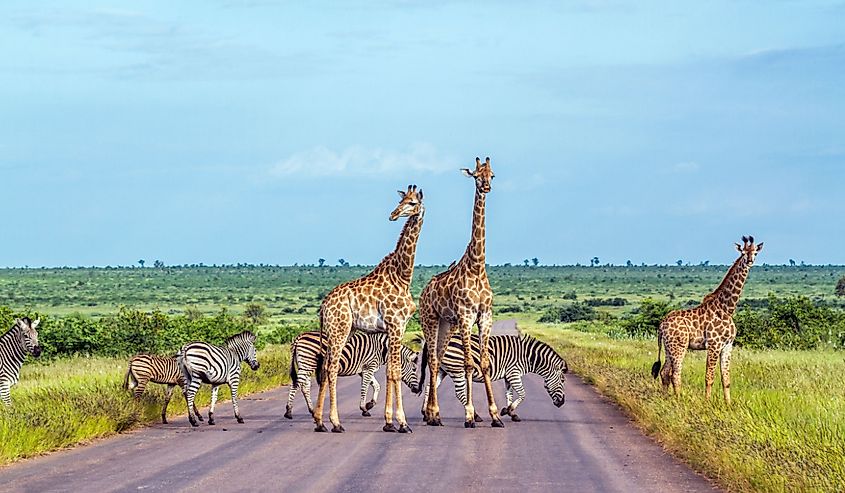
When the giraffe was first classified in 1758, zoologists believed that there was only one species in existence, the Cervus camelopardalis (now known as Giraffa camelopardalis). It was not until the late 1900s and early 2000s that DNA research and analyses of the animal’s morphology uncovered multiple species and subspecies. By 2016, studies had confirmed four primary species which had unique characteristics. While the exact number is still debated, these four species are currently used to classify the known giraffe population. The four species are; Giraffa camelopardalis (northern giraffe), Giraffa reticulata (reticulated giraffe), Giraffa tippelskirchi (Masai giraffe sensu lato), Giraffa giraffa (southern giraffe).
Out of these, all species except for the Giraffa reticulata have 2 or more sub-species. For example, the most common, Giraffa camelopardalis boasts three sub-species whose common names are the Kordofan giraffe, Nubian giraffe, and West African giraffe. Adding up all the sub-species gives a total of 9 unique types of giraffes as of 2023.
Diet
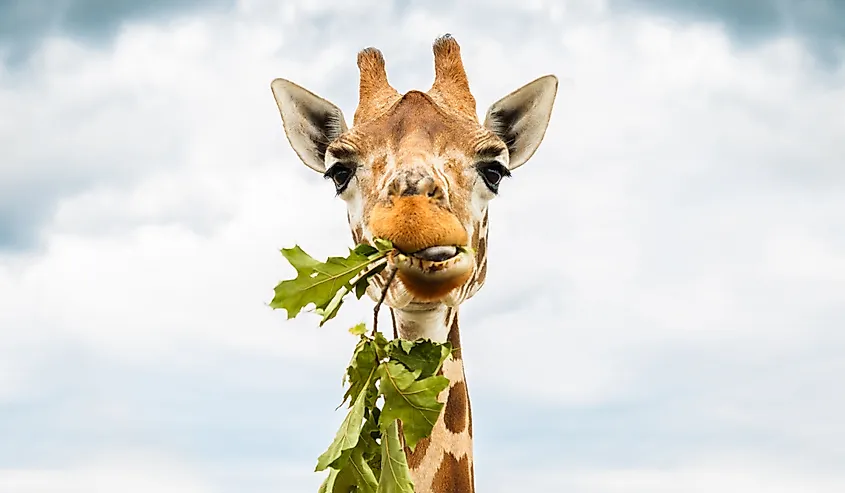
Despite their massive size, giraffes are herbivores and only feed on plants. Yet another benefit to their elongated necks and legs, these animals can reach high up into trees for leaves, fruits, and flowers which many other animals cannot. So, giraffes boast a sort of exclusivity when it comes to many food sources in their habitat. Their primary diet consists of leaves and twigs from acacia, mimosa, bushwillow, and wild apricot trees. Additionally, giraffes will also eat shrubs and herbs such as those within the Acacieae and Commiphora classifications.
On average, a giraffe consumes 60 - 75 pounds (27 - 34 kg) of food in a day. However, they are quite efficient animals and if needed, can also survive on less than 35 pounds (16 kg) in a day. Apart from their normal diet, giraffes are also known to chew on large branches when they are stressed out, although this is quite an occasional habit.
Behavior and Reproduction
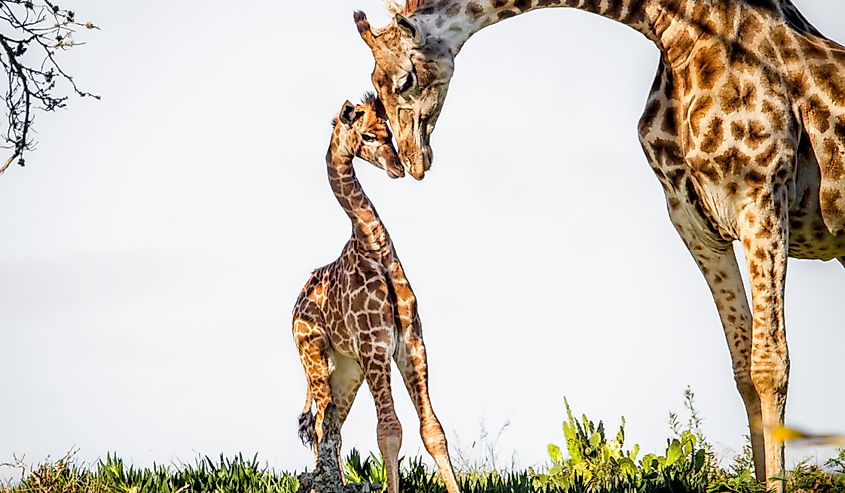
Similar to many other ruminants, the majority of a giraffe's day and part of the night is spent feeding. Depending on the availability of food, they can spend up to 20 hours a day eating food, chewing their cud, and relaxing. The reason giraffes can do this is because they only need 4-5 hours of intermittent sleep in a day. To this end, they have approximately 20 active hours which allows them to move around, eat, and drink for the majority of their time. That being said, male giraffes also spend some time in the day fighting with each other for entertainment, sexual play, and occasionally serious reasons.
When it comes to giraffes’ social structure, these animals are usually found in groups or herds. These groups can have anywhere between two to 70 giraffes who will interact, move with, and sometimes mate with one another. While they do travel together, there is no hierarchy within these groups and it is more of a loosely linked community. Due to this, groups are also easily connected or dispersed by outside factors. For example, human interruption is a common reason for giraffe social groups to break apart. On the other hand, smaller groups of female giraffes can also be connected to others through males to create larger super communities.
Reproduction in giraffes often takes place within the group wherein dominant males will mate with all fertile females. This usually begins when female giraffes reach 3-4 years old and begin experiencing their oestrus cycling. This takes place approximately every 15 days throughout the year and is the time when female giraffes are fertile. To assess this, male giraffes who have begun mating (6+ years old) will taste the female’s urine which allows them to detect fertility. If a female is fertile, the male will begin to court her by showcasing dominance amongst other males, liking the female’s tail, and nudging her with his horns. If the male is successful and both animals copulate, the gestation period of approximately 15 months begins.
After a giraffe calf is born, it grows quickly and can begin walking in a few hours. For its care, mothers will keep calves in their herds and often stay with them for the first 12-16 months. That being said, mothers may sometimes leave their calves with other female giraffes if they are elsewhere.
Ecological Importance
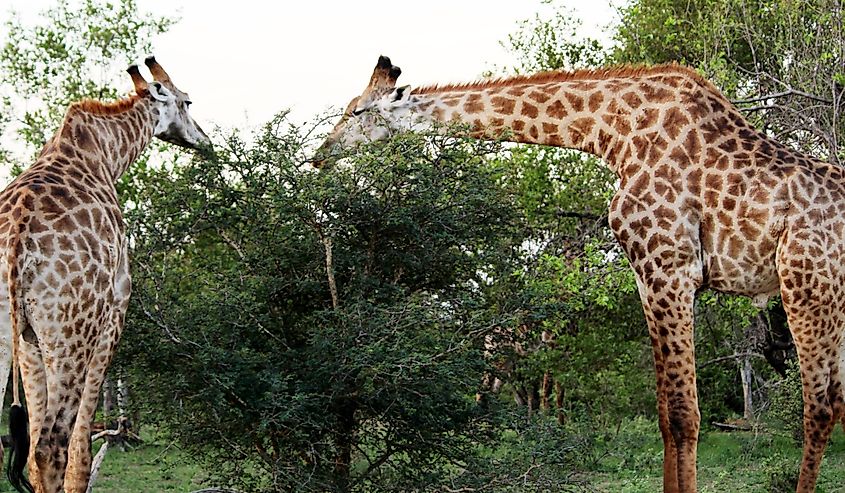
Apart from their title as the tallest land mammal on earth, giraffes are also a keystone species. This means that they define an entire ecosystem and without giraffes, the environment would be noticeably different. The reason for this is that giraffes are one of the most prominent foragers in Africa’s savannas and eat immense amounts of leaves each day. This keeps the landscape in control and also allows many plants to disperse seeds via giraffes. Along with this, giraffes are also vital for managing and protecting smaller animals from predators. Thanks to their height, they can see animals such as lions from afar and alert gazelles and other prey to run away.
Threats
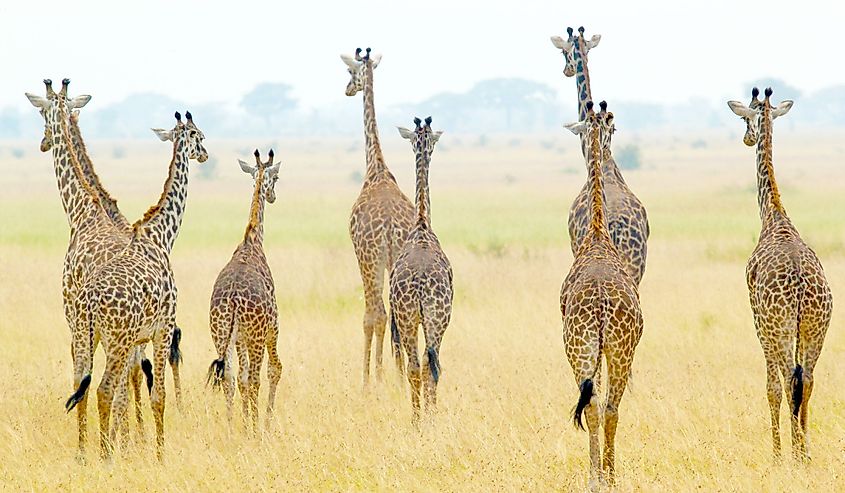
Over the past few years, the giraffe population has dropped immensely due to a plethora of reasons. From an estimated 150,000+ giraffes in 1985, it is now believed that there are less than 100,000 left in the wild. Due to this, giraffes are classified as a Vulnerable species by the IUCN which signifies a need for concern. Moreover, subspecies such as the Nubian giraffe are classed as critically endangered and may even be extinct soon.
This threat to the giraffe population is due to a mix of habitat loss and hunting. With the ever-growing human population and urban development in Africa, the savannahs which giraffes call home are being depleted. Moreover, with issues such as civil unrest and military activities, giraffe populations are falling at a substantial rate due to human intervention. Even indirectly, human activity can also lead to the fragmentation of giraffe groups which is detrimental to their growth as a social species.
Apart from this, hunting is another major cause for concern. As giraffe meat, pelts, bones, and other parts are sought after, illegal hunting has been going on for decades. Hunters will use traps and firearms to kill giraffes and sell their parts for money.
Thankfully, while these issues still exist, many actions are being taken to preserve and grow the giraffe population. For example, the setting up of protected natural areas and the strengthening of anti-poaching measures are a step in the right direction for the world’s tallest animal. That said, it is still uncertain how much needs to be done and if it is too late for some subspecies like the Nubian giraffe.
Fun Facts
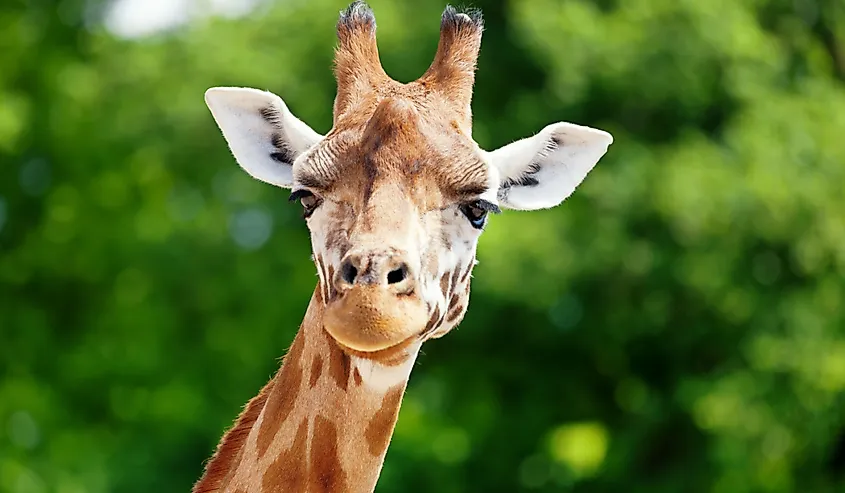
Did you know that the tallest animal also has some unique characteristics? Let’s take a look at some fun facts about the giraffe:
- A giraffe has only two gaits (pattern of leg movement) - Giraffes are only able to walk or gallop. Each of these gaits uses a specific pattern of leg movement which is essential for the animal to keep its balance and momentum.
- Giraffes have black tongues - Used to twist around branches and eat, giraffes tongues are either dark black or blue. This color is believed to protect the tongue from sunburn, although scientists are not certain about this one. Surprisingly, these tongues can reach an impressive length of up to 20 inches!
- All giraffes are unique - Similar to human fingerprints, all giraffes have a unique pattern.
- Giraffes don’t need much sleep - Unlike humans who need to sleep for about 6 hours each night, giraffes are much more efficient. While they sleep for 4 hours on average, these animals don’t need more than 30 minutes of sleep per day.
All in all, the giraffe is a fascinating mammal known for its immense height. From pruning and maintaining the landscape to protecting smaller animals, this keystone species is vital for the ecosystem! However, with habitat loss and hunting causing major drops in the giraffe population, the thriving species has now become vulnerable! So, we need to learn more about them and provide them with the space needed to grow and flourish in Africa’s wilderness.
